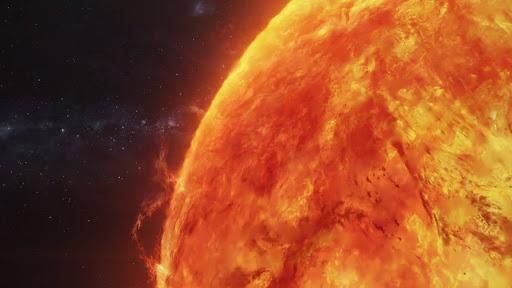
‘Peacock Jets’ on Sun Linked to Magnetic Flux Cancellation
The Sun, the star at the center of our solar system, has been a subject of fascination for scientists and astronomers for centuries. Its magnetic field is particularly intriguing, influencing the behavior of charged particles and the solar wind. In a recent breakthrough, researchers have discovered a new phenomenon – ‘peacock jets’ – recurrent fan-shaped eruptions in the Sun’s lower atmosphere. These jets are powered by magnetic flux cancellation, where opposing magnetic fields vanish, triggering energy release.
The study, published in the journal Nature, reveals that these ‘peacock jets’ are a result of magnetic breaking and reconnection, a process where magnetic fields are stretched and then snap back together, releasing a massive amount of energy. This energy release creates the characteristic fan-shaped structure, resembling a peacock’s feathers, hence the name ‘peacock jets.’
The discovery of peacock jets is significant because it provides a deeper understanding of the Sun’s magnetic dynamics. This knowledge is essential for predicting space weather, which can have a profound impact on our daily lives. Space weather refers to the dynamic and variable conditions in the solar system, including solar flares, coronal mass ejections, and geomagnetic storms. These events can disrupt communication and navigation systems, causing widespread disruptions to our technology.
The peacock jets are observed in the chromosphere, the lower atmosphere of the Sun, just above the surface. The researchers used data from the Solar Dynamics Observatory (SDO) and the Interface Region Imaging Spectrograph (IRIS) to study these jets. They found that the jets are triggered by magnetic flux cancellation, where opposing magnetic fields vanish, releasing a massive amount of energy.
The process of magnetic breaking and reconnection is complex and involves the interaction between the Sun’s magnetic field and its plasma. The plasma is made up of charged particles, including electrons and protons, which are ionized by the intense heat and radiation from the Sun’s core. The magnetic field is generated by the motion of these charged particles, creating a complex pattern of magnetic field lines.
When the magnetic field lines are stretched, they become unstable and eventually break, releasing a massive amount of energy. This energy release creates the characteristic fan-shaped structure of the peacock jets. The jets are powered by the reconnection of the broken magnetic field lines, which creates a rapid release of energy.
The discovery of peacock jets has significant implications for our understanding of the Sun’s magnetic dynamics. It provides a new mechanism for understanding the energy release in the Sun’s lower atmosphere, which is essential for predicting space weather. The knowledge gained from this research can be used to improve the accuracy of space weather forecasts, allowing us to better prepare for and mitigate the effects of space weather events.
The study of peacock jets also has implications for our understanding of the Sun’s internal dynamics. The research suggests that the Sun’s magnetic field is more dynamic and complex than previously thought, with multiple mechanisms driving its behavior. This increased understanding of the Sun’s internal dynamics can provide new insights into the Sun’s evolution and its impact on the solar system.
In conclusion, the discovery of peacock jets provides a new insight into the Sun’s magnetic dynamics, revealing a complex and dynamic process that drives energy release in the lower atmosphere. The study of these jets has significant implications for our understanding of space weather and the Sun’s internal dynamics. As we continue to study the Sun and its magnetic field, we can gain a deeper understanding of the complex and dynamic processes that shape our solar system.






